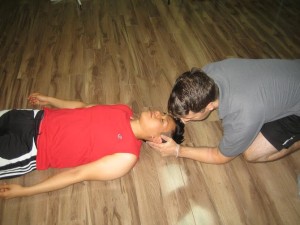Ventricular fibrillation is characterized by an abnormal rhythm of the heartbeat. It is important to note that the heart rhythm must be in a regular and steady manner. The condition causes the heart to rapidly beat and out of rhythm. Remember that this is an emergency condition that can be instigated by a heart attack.
Indications
If ventricular fibrillation occurs, the 2 chambers in the lower region of the heart (ventricles) could not adequately move blood throughout the body.
This causes the blood pressure to rapidly drop and prevents blood from moving throughout the body. As an outcome, blood could not reach the vital organs.

Fainting or loss of consciousness are the usual indications of ventricular fibrillation and the early indications include:
- Dizziness
- Chest pain
- Shortness of breath
- Nausea
- Fluttering, rapid heartbeat
If any of these symptoms are present, call for emergency assistance right away.
What are the causes of ventricular fibrillation?
Even though the precise causes of ventricular fibrillation are not known, the issue usually originates from disruptions in the electrical impulses that control the heartbeat. Heart attack or loss of blood flow to the heart can trigger the condition.
It often starts with ventricular tachycardia which is described as a very rapid heartbeat that alters the electrical impulses in the heart. This often occurs among those with scar tissues from previous heart attacks or damage to the heart muscle from heart issues. If left untreated, ventricular tachycardia can lead to ventricular fibrillation.
Management
If suffering from ventricular fibrillation, he/she is likely to pass out from the blood loss. Aside from calling for emergency assistance, CPR or defibrillation is vital for survival.
With the help of CPR, it helps drive blood throughout the vital bodily organs. Remember that chest compression is an important maneuver and must be done right away to maintain circulation. Establishing an airway and performing rescue breaths must follow.
Medical care
Upon arrival at a healthcare facility, the doctor will monitor the heart rhythm and utilize imaging scans to check for any obstructions in the heart that led to a heart attack. Medications might be given to minimize the erratic heartbeats or keep the heart pumping.
An implantable cardioverter defibrillator might be suggested to monitor the heart rhythm and transmit shocks when needed to increase or reduce the heart rhythm.
Cardiac catheterization with angioplasty might be required if any of the arteries in the heart is blocked. A cardiac stent which is a mesh tube might be placed permanently in the artery to keep it open.
In some cases, invasive measures might be required such as coronary bypass surgery that involves attachment of a healthy artery to a blocked one. This enables the blood to bypass the clogged artery and smoothly flow via the newly linked artery.
More Information / Disclaimer
The information posted on this page on ventricular fibrillation is for learning purposes only. Learn to recognize and manage circulatory conditions by taking a standard first aid course with Toronto First Aid.
